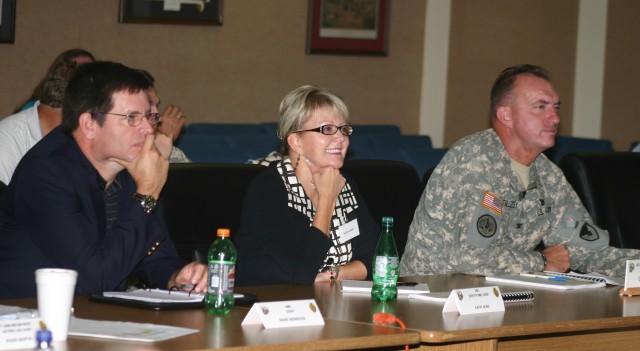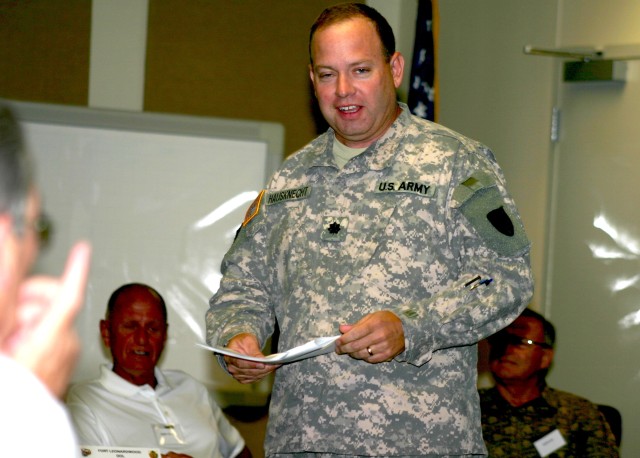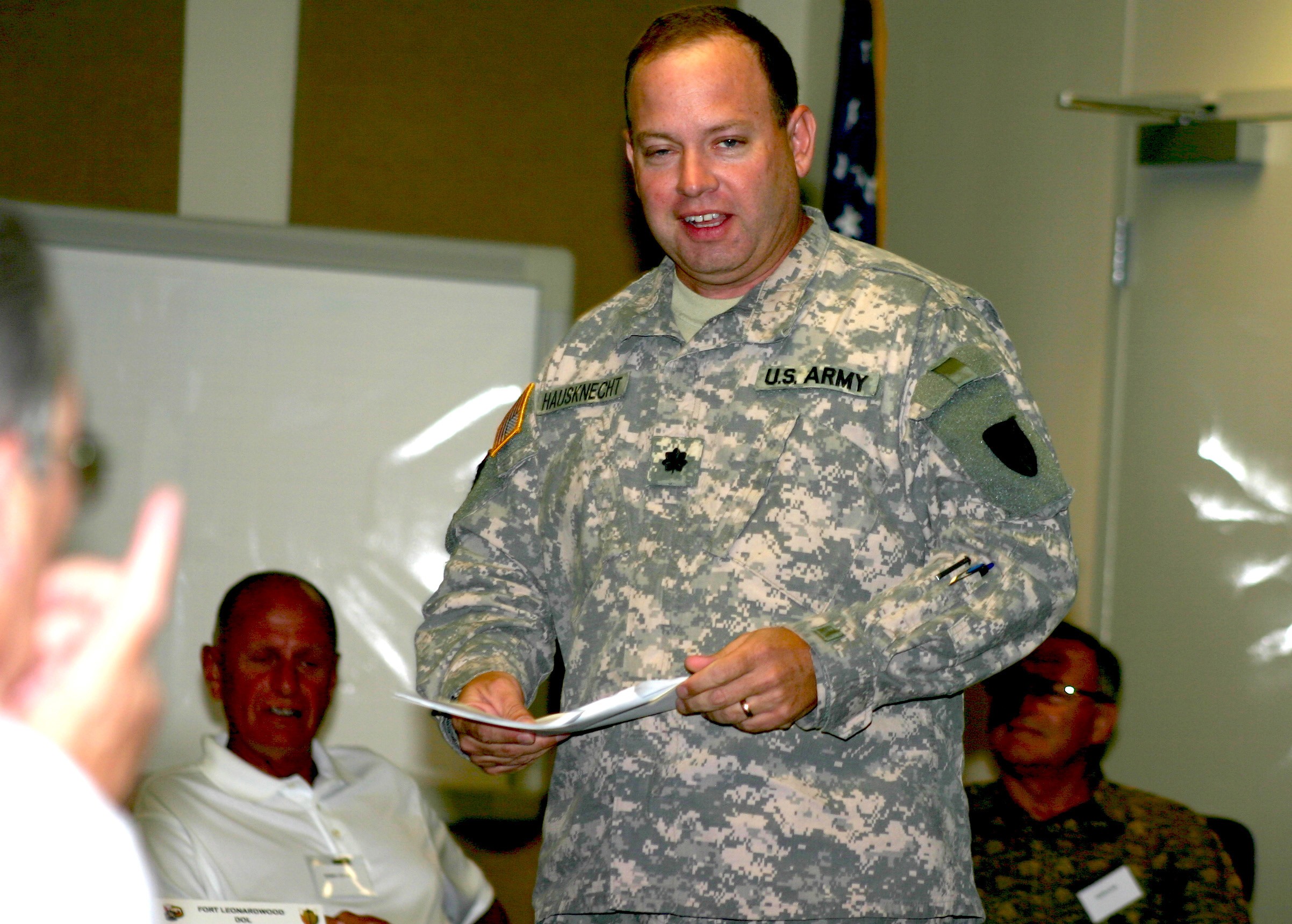More than 70 people participated in the "Mighty" 407th Army Field Support Command's Directorate of Logistics rehearsal of concept drill Sept. 20-21 at Fort Hood, Texas.
Participants included members of the 407th AFSB, its four battalions, 12 installation directorates of logistics, and representatives from Army Materiel Command, Army Sustainment Command, and Installation Management Command headquarters.
On Oct. 1, AMC assumed operational control of DOLs in the continental United States, Alaska, Hawaii, Puerto Rico and Honduras, with operational control of other overseas DOLs to occur during fiscal year 2011.
ASC, through its brigades and battalions, will manage the DOLs. Transfer of administrative control, which includes resources and personnel, is expected to occur in FY 2012.
The purpose of the workshop was to build the AFSB-AFSBn-DOL team; to synchronize 407th AFSB command and control of the DOLs; to discuss and implement, where possible, processes, procedures, and metrics; and lock in relationships between the DOLs and the battalions, said Col. Danny Tilzey, 407th AFSB commander.
"For the last two days we've brought (the DOLs) into the family of the Army Materiel Command. We basically worked on how they are going to come into this family," Tilzey said.
The group outlined several goals. To accomplish those goals, though, they focused on communication and education.
During the first day, the directors of logistics and the four battalion commanders took part in a role-playing exercise. The logistics directors briefed the battalion commanders' responsibilities to the workshop participants, and the commanders in turn briefed the responsibilities of the logistics directors. The purpose of this exercise was to sensitize each group to the responsibilities and missions of the other.
"It was kind of eye-opening and breaking down walls... so as a team they could become a little more cohesive by understanding each others' missions," said Jerry Stephens, 407th AFSB support operations officer.
After the role-playing, the group discussed which metrics they would use to rate the DOLs on the eight common levels of support they provide: supply, maintenance, ammunition supply, food service, central issue facility, property accountability, laundry services and transportation.
Tilzey adapted a process he learned from his cavalry training, a decision support matrix, to the logistics field. The matrix included naming areas of logistics, and then focused on observing issues and determining solutions to those issues.
The directors and battalion commanders worked together to determine the metrics to monitor those goals within the matrix, Stephens said.
The second main purpose of the workshop was education.
The logistics directors briefed their operations to the group, concentrating on those functions with which most of the participants had no experience.
Maintenance and supply activities, which represent about 20 percent of the DOL mission, have been under operational control of AMC for several years, said Robert Bishop, director of logistics for Fort Hood, Texas. But AMC has no experience with the other 80 percent, he noted.
"We gave them a better understanding of that other 80 percent that is really kind of new stuff, new logistics functions, to the AMC family. We talked about all the intricacies of transportation, food service, pieces of supply that they are not aware of, and the services we provide," Bishop said. "I think that was the education piece that we really shared with our ASC folks."
Tilzey also requested the logistics directors provide a training program for the battalion commanders, so every month they would learn about a different aspect of the DOLs.
While all of the goals for the ROC drill were accomplished, much more needs to be done, Tilzey said.
"(We're) learning the issues we're going to face - there's many pages of them," Tilzey said. "And we extracted lots of challenges and things we're going to face."
For the Fort Hood DOL, there are very few issues that need to be resolved for the operational control phase, Bishop said.
"The big things to be worked out is when we transfer the total responsibility, we take (administrative control), which includes people and resources," Bishop said. "I shouldn't say issues - challenges."
Stephens considered the workshop extremely successful.
"We initiated the communication and team-building effort. We developed the goals we wanted to get developed for each of the DOL internal functions. People bought into it, they understood the goals, they agreed to the goals. So in that regard, we achieved all of our goals and (the) end-state that we wanted to," he said.
Bishop sees a major advantage to moving his DOL to AMC control.
"There are logisticians overwatching logisticians. I think that's the number one advantage," Bishop said. "I have somebody up above me who will understand and appreciate what we do."




Social Sharing